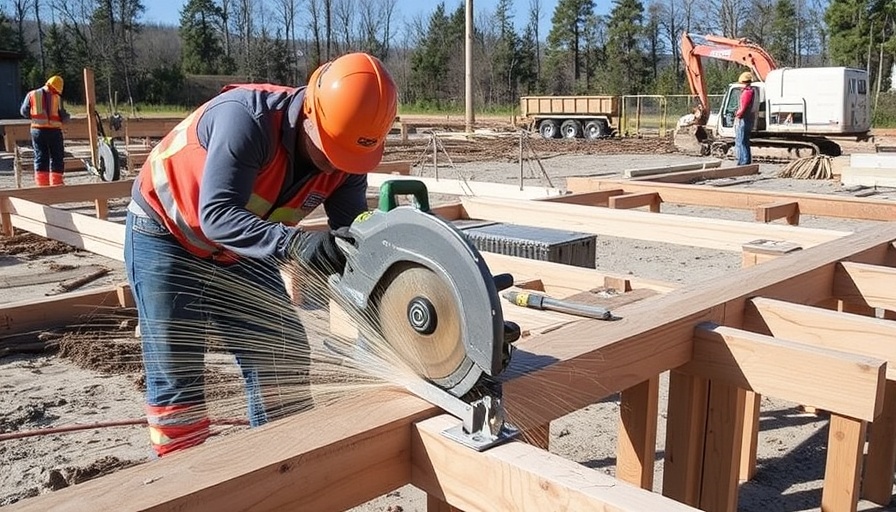
Unlocking Cost Efficiency in Commercial Spaces
For business owners and property developers, striking a balance between labor costs and safety is crucial. The commercial construction landscape often poses the challenge of ensuring employee safety while minimizing expenses. By utilizing innovative strategies, companies can both protect their workforce and enhance operational efficiency.
Understanding Labor Costs in Construction
Labor costs account for a significant portion of construction expenses, comprising about 30-50% depending on various project scopes and locations. To manage these costs effectively, companies can explore flexible scheduling, cross-training employees, and implementing advanced technologies that streamline processes. Such measures not only reduce unnecessary expenditures but also foster a culture of safety and productivity.
Emphasizing Safety Through Technology
Investing in safety technology can lead to immediate and long-term savings. Wearable devices, for instance, can monitor worker fatigue and environmental conditions, ensuring that safety measures are adhered to without increased manual oversight. Furthermore, utilizing drones and robotic solutions helps in inspections and repetitive tasks, minimizing risk while controlling labor costs.
Creating a Safety-First Culture
Establishing a safety-first mentality within an organization leads to better employee morale and productivity. Training sessions that not only cover workplace safety protocols but also include mentoring programs can enhance team cohesion and decrease accidents on-site. An investment in training today could prevent costly accidents tomorrow, ultimately saving finances down the line.
Streamlining Operations for Maximum Efficiency
Operational inefficiencies often translate into inflated labor costs. By adopting lean construction methodologies, companies streamline workflows and reduce worker downtime. Regular performance evaluations can identify bottlenecks in processes, allowing for more vibrant project management and execution strategies that prioritize safety without sacrificing economy.
Case Studies: Practical Applications
Several industry leaders provide inspiring examples of implementing these strategies: a well-known construction firm recently reduced labor costs by 15% through technology enhancements while increasing safety compliance rates by 30%. Another company instituted a rigorous training program focusing on best practices for equipment use, resulting in fewer accidents and higher employee retention.
Embracing a Proactive Approach
Understanding that every dollar saved contributes to the overall profitability of a project, businesses must remain proactive in their pursuit of cost-efficiency. Seeking external expertise on labor management and safety planning can help businesses refine their strategies and implement new technologies, positioning them to thrive in a competitive market landscape.
By embracing a proactive approach to labor management and safety compliance, businesses can not only cut costs but also build a solid reputation within the community for delivering high-quality, safe environments. This dual focus ultimately enhances customer loyalty and fosters long-term growth.
Take Action Today for a Safer Tomorrow
The construction sector is ever-evolving, and the best course for sustainable growth is to prioritize safety alongside cost-saving initiatives. Companies that leverage innovative technologies and train their workforce effectively not only save on expenses but also cultivate trust and reliability. Start assessing your current practices today and explore how safety and economy can harmoniously coexist in your projects.
 Add Row
Add Row  Add
Add 




 Add Row
Add Row  Add
Add 

Write A Comment